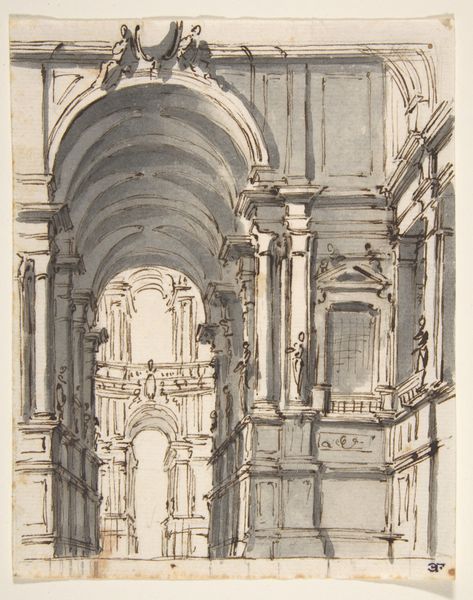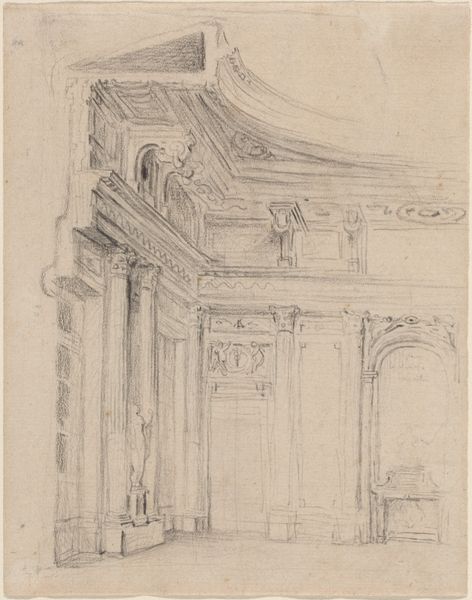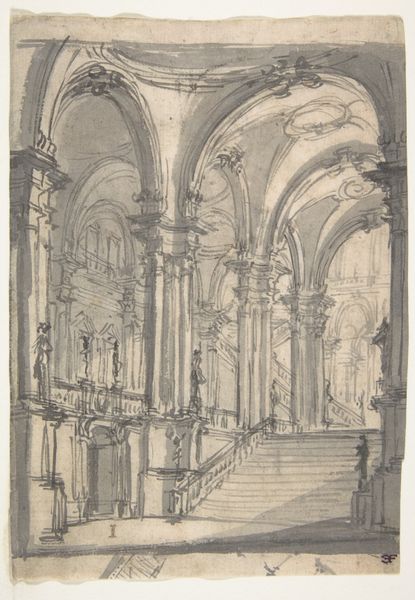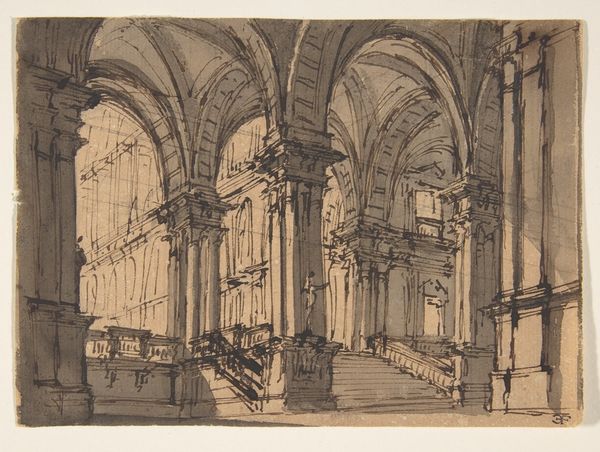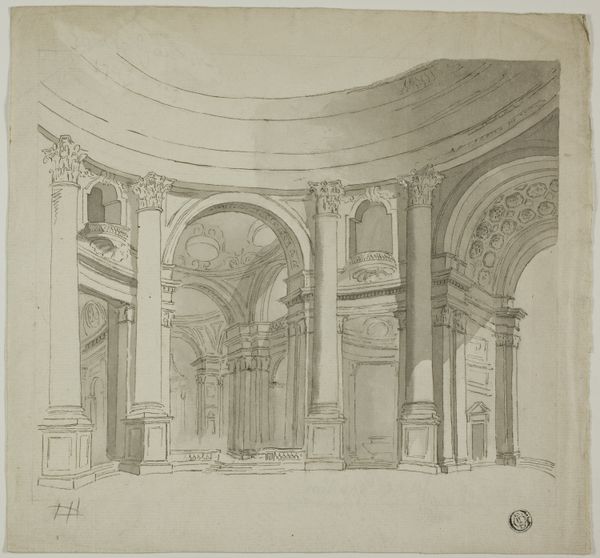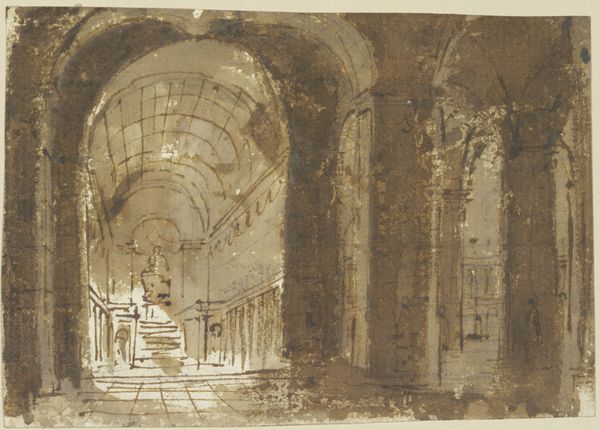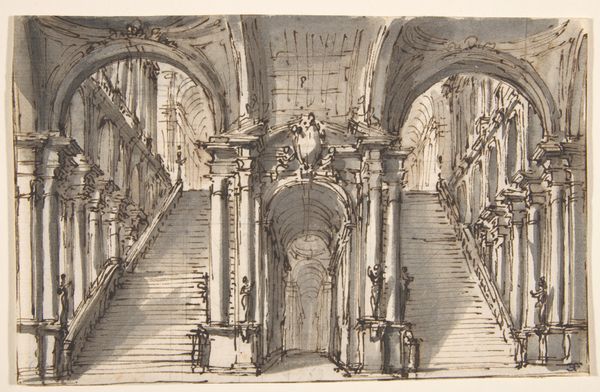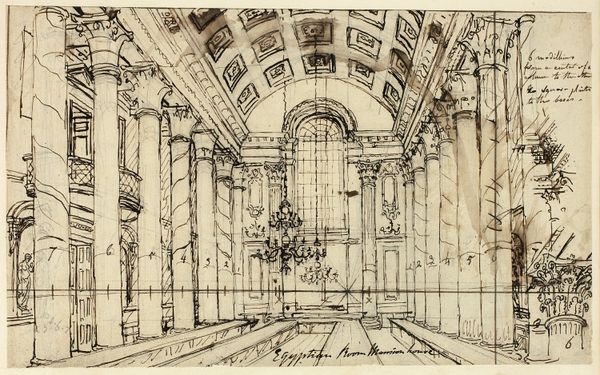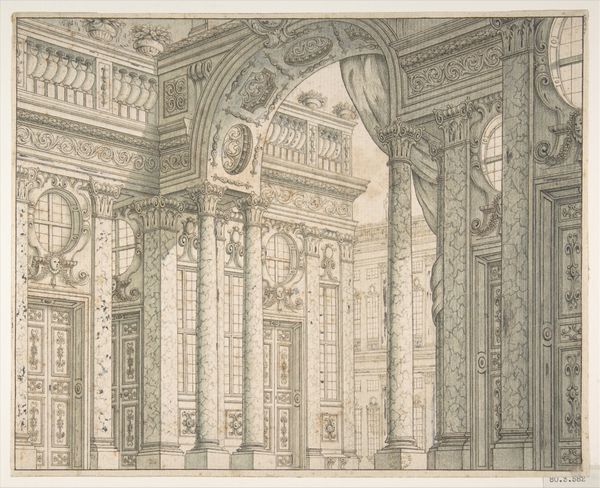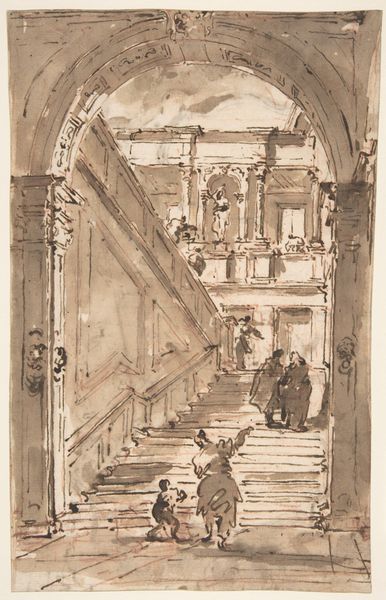
drawing, etching, ink, architecture
#
drawing
#
baroque
#
etching
#
etching
#
perspective
#
form
#
ink
#
column
#
line
#
cityscape
#
history-painting
#
architecture
Dimensions: sheet: 4 1/8 x 6 in. (10.4 x 15.2 cm)
Copyright: Public Domain
Curator: Giovanni Battista Natali the Third's "Design for Stage Set" presents us with an interesting example of Baroque scenography. Likely created sometime between 1698 and 1765, it's rendered in ink and etching, currently held at the Metropolitan Museum. Editor: Oh, it’s just so dreamy and cavernous, isn’t it? The washes of ink evoke the kind of old theatre you'd imagine ghosts floating around in, like some grand drama about to unfold or that already had. The ink feels light, almost ethereal, as if this architecture exists just beyond a veil. Curator: The purpose was indeed to design something ephemeral—a backdrop to elevate the drama on stage. Natali, along with others, used such designs to explore theatrical inventions and foster engagement in a public world still reliant on spectacle. Look at how perspective and dramatic composition would manipulate viewers' emotions. Editor: Absolutely! Those massive columns are really imposing, it's not difficult at all to visualize larger-than-life characters giving soliloquies from behind them. Though there are no people, I do notice small square frames on the columns like portraits or small sculptures almost, that makes it even more haunting. Curator: Good eye! One thing that always fascinated me is the tension between this apparent grandeur and the physical impermanence it represents. All of this built not from stone for centuries, but constructed perhaps from painted wood, for months or years. The fleeting made monumental. Editor: It really flips your sense of space. You’ve got these solid, almost oppressive forms but at the same time they are light, almost skeletal. Makes you wonder, does a ghost know that it is supposed to be scary? Do the players on stage in front of such structures ever get intimidated and start stuttering their lines? Curator: Natali captured and magnified that ambiguity inherent in these constructed worlds, influencing how performers were received by an audience and therefore contributing meaningfully to social dialogue. It is about using and constructing perspective to make a powerful image, rather than reality itself. Editor: Absolutely. And isn't that, really, the business of theater and indeed art in general? Beautiful stuff! It does make you wish there was another view in this series though, I'm curious if other designs would make the ghost appear!
Comments
No comments
Be the first to comment and join the conversation on the ultimate creative platform.
